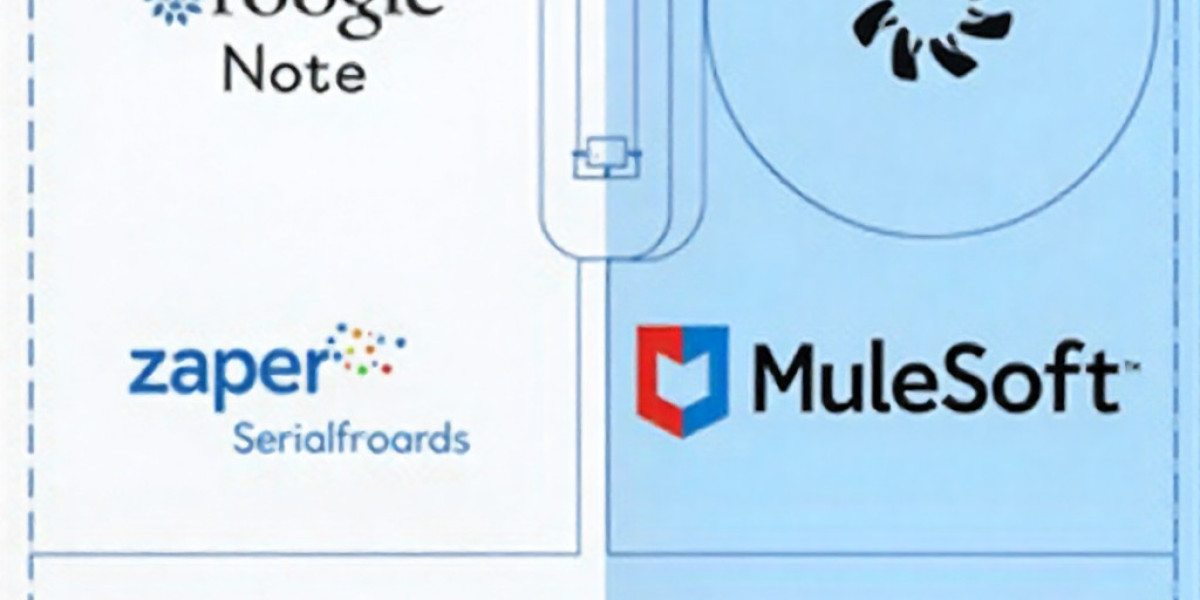In an era where businesses rely on multiple digital tools, seamless data flow is no longer a luxury; it’s a necessity. Whether you’re managing customer relationships, automating workflows, or synchronizing cross-platform data, integration middleware has become the backbone of business efficiency. The question most companies face today isn’t whether they need integration software, but which one is the right fit for their ecosystem.
As 2025 approaches, three major middleware platforms continue to dominate conversations among IT leaders and business automation specialists: Zapier, MuleSoft, and Make (formerly Integromat). Each tool brings unique capabilities, price points, and scalability levels. Choosing between them requires understanding not only your technical requirements but also your long-term integration strategy.
Why Middleware Matters in Modern Business Architecture
Middleware bridges the gap between disconnected systems, ensuring that data moves seamlessly across applications without manual input. As organizations grow, so does the complexity of their technology stack. Middleware eliminates data silos by connecting CRM systems, marketing automation platforms, financial tools, and collaboration software, all in real time.
Take, for example, the use of salesforce and sharepoint integration in enterprises. This type of connection ensures that sales and marketing teams can access customer files, presentations, and proposals directly within the CRM without toggling between platforms. Such integrations improve productivity, data accuracy, and team collaboration, precisely what middleware solutions like Zapier, MuleSoft, and Make aim to simplify at scale.
Zapier: The Automation Powerhouse for Simplicity
Zapier has built its reputation as the go-to middleware for startups, small businesses, and even mid-market companies that prioritize agility and ease of use. It’s a no-code platform, meaning users don’t need programming expertise to automate workflows, or “Zaps,” between more than 6,000 supported apps.
Key Strengths:
Ease of Use: Zapier’s intuitive interface allows anyone to set up workflows quickly using triggers and actions.
Extensive Integrations: Its massive app library covers everything from CRMs and email tools to social media platforms.
Scalability for SMBs: Perfect for automating repetitive tasks without heavy IT involvement.
Limitations:
Limited Customization: While great for straightforward workflows, Zapier struggles with complex enterprise-level integrations.
Cost at Scale: Pricing increases significantly as you scale and add multi-step workflows.
Data Handling: It doesn’t offer advanced data transformation or API management.
Zapier is best suited for companies seeking quick wins in automation businesses that value simplicity over complexity and want to connect apps like HubSpot, Gmail, or Slack without IT dependency.
MuleSoft: The Enterprise Integration Titan
MuleSoft, a Salesforce company, represents the enterprise-grade end of the integration spectrum. It’s not just middleware, it’s a full-fledged Integration Platform as a Service (iPaaS) that enables organizations to connect any application, data source, or device through APIs.
Key Strengths:
API-Led Connectivity: MuleSoft excels at connecting complex enterprise systems using a structured API approach.
Advanced Security and Governance: Ideal for organizations with strict data compliance and control requirements.
High Scalability: Designed for global enterprises dealing with massive data flows across departments and geographies.
Integration Depth: Perfect for industries like finance, healthcare, and manufacturing where precision is crucial.
Limitations:
Steep Learning Curve: MuleSoft requires technical expertise, making it less accessible for non-developers.
Higher Cost: Licensing and maintenance fees can be prohibitive for smaller companies.
Longer Implementation Time: Setup can be time-intensive due to its advanced architecture.
MuleSoft is a strategic choice for enterprises needing end-to-end integration with robust governance. Its real strength lies in connecting on-premise and cloud systems in complex IT environments.
Make (formerly Integromat): The Visual Workflow Builder
Make sits between Zapier’s simplicity and MuleSoft’s enterprise sophistication. Known for its visual integration interface, Make allows users to design multi-step, branching workflows with drag-and-drop functionality, all without code. It appeals to both business users and developers who want flexibility without complexity.
Key Strengths:
Visual Editor: Create sophisticated workflows easily with a diagram-style interface.
Affordable Pricing: Offers powerful features at a fraction of MuleSoft’s cost.
Advanced Logic: Supports conditions, loops, and error handling that go beyond what Zapier offers.
Real-Time Execution: Provides near-instant data transfer and process visibility.
Limitations:
Learning Curve for Beginners: While visual, the platform’s flexibility can feel overwhelming at first.
Support and Documentation: Not as extensive as MuleSoft’s enterprise-level support.
Limited Enterprise Governance: Lacks some compliance and monitoring features needed in large-scale environments.
Make is an excellent option for mid-sized organizations or growing startups that need more power than Zapier but don’t require MuleSoft’s enterprise-grade infrastructure.
Head-to-Head Comparison
| Feature | Zapier | MuleSoft | Make |
|---|---|---|---|
| Ease of Use | ★★★★★ | ★★☆☆☆ | ★★★★☆ |
| Best For | SMBs, startups | Large enterprises | Mid-sized businesses |
| Pricing | Affordable (scales with usage) | Premium (enterprise pricing) | Cost-effective |
| Customization | Limited | Advanced | Moderate to high |
| Integration Depth | Basic triggers/actions | Full API management | Multi-step automation |
| Governance & Security | Basic | Enterprise-grade | Standard |
| Learning Curve | Minimal | Steep | Moderate |
Each platform has a clear audience: Zapier focuses on quick, simple connections; MuleSoft dominates the enterprise space; and Make bridges the gap between both worlds with flexibility and affordability.
Choosing the Right Middleware for Your Business
Selecting the right middleware depends on three core factors business size, technical capacity, and integration complexity.
For Startups and Small Businesses:
Zapier remains the top choice. It’s intuitive, affordable, and integrates thousands of apps in minutes.For Growing Mid-Sized Organizations:
Make provides greater customization, visual workflow mapping, and scalability without breaking the bank.For Large Enterprises:
MuleSoft is unmatched in enterprise-grade security, scalability, and API-led connectivity. It’s ideal for organizations managing multiple CRMs, ERP systems, and data warehouses across regions.
Ultimately, your choice should align with your growth stage, integration complexity, and governance needs. A hybrid approach is also possible; many companies use Zapier or Make for quick automations while employing MuleSoft for mission-critical enterprise integrations.
Future of Middleware in 2025 and Beyond
As AI becomes central to business operations, integration tools are evolving beyond simple data syncs. Middleware platforms are adopting machine learning to predict workflow errors, optimize data routing, and enhance system reliability. Moreover, the demand for real-time analytics and hyperautomation means integrations must go beyond connectivity; they must deliver insights.
Security and compliance will also continue to play a dominant role. With stricter global data regulations, middleware solutions that provide visibility, encryption, and control will gain an edge.
Conclusion
Choosing between Zapier, MuleSoft, and Make isn’t about which is objectively better ; it’s about which aligns with your business priorities. Zapier empowers agility, MuleSoft delivers enterprise power, and Make offers a flexible middle ground.
In a world where businesses operate on interconnected systems, middleware is the silent engine that powers collaboration and data flow. Whether connecting CRMs, marketing tools, or collaboration platforms, the right middleware can turn fragmented workflows into a unified, efficient ecosystem.








